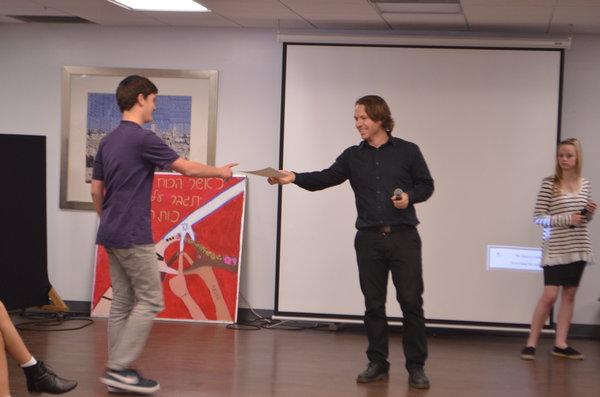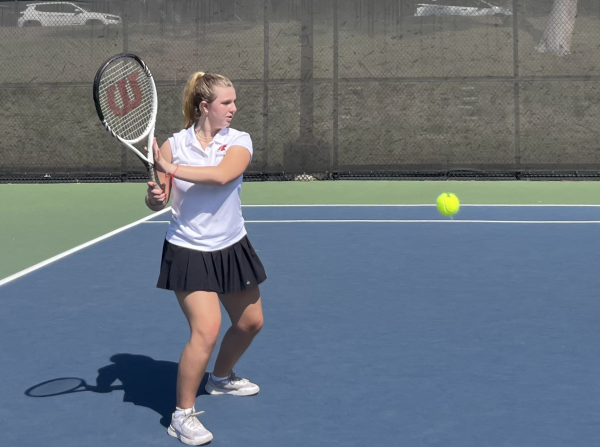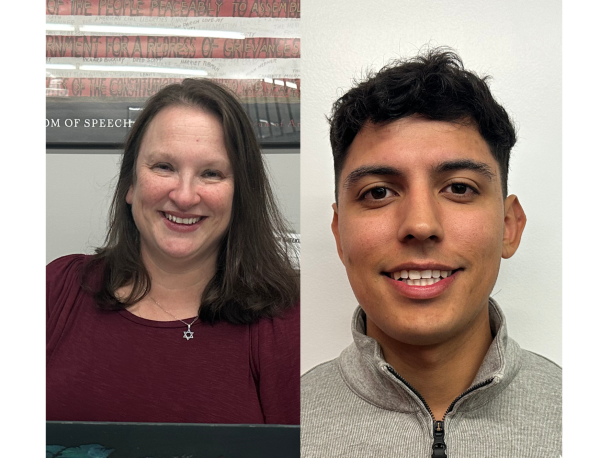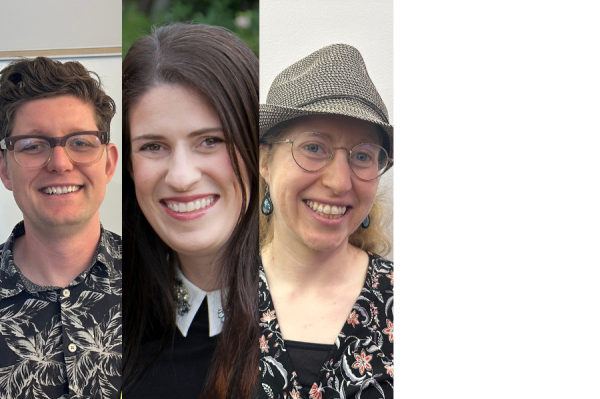Science Fair: Sponges, carrots and other mysteries

WINNER: Sophomore Yonah Feld accepts an honorable mention for his project.
June 12, 2014
By Alec Fields, Staff Writer
What is the best way to rid bacteria from a worn sponge? How do different cooking methods affect retention of vitamin C in carrots? Are fingerprints hereditary? All these questions and more were answered at Shalhevet’s third annual Science Fair this past March.
Using the scientific method, students methodically tested a variety of hypotheses to solve a range of scientific problems.
For the first time, the science department limited the number of experiments in a particular topic area, which led to “a greater diversity of projects in the different sciences as opposed to a concentration in only one or two categories,” according to chemistry teacher Christopher Buckley. The variety contributed to the success of the science fair and avoided “an overabundance of projects in a certain genre,” added Mr. Buckley.
“There’s been incremental improvement every year,” said Mr. Buckley. Subject areas in this year’s science fair included chemistry, physics, plant physiology, animal behavior, microbiology, medicine/human physiology, and social science.
Senior Jennie Drazin, who won first place honors, tested the most effective way to clean a used, bacteria-laden sponge. After much research, she found that microwaving sponges was the best way to sanitize them. She has not yet selected one of the three prizes offered: a chemistry set, microscope, or a science-related gift of equal value.
Jennie also assessed the precise microwave time needed to efficiently remove germs from old sponges. Two years ago, Jennie received an honorable mention the first year of the Science Fair for testing whether frequent hand washing reduced the amount of bacteria on a cell phone.
“I find research fascinating,” said Jennie, who is contemplating a career in the medical field.
Freshman Jonah Kaye earned the second place prize – a two year subscription to Popular Science magazine – for his study comparing which type of roof reflects the most heat. Honorable mention certificates were given to 9th grader Yonah Feld, and 11th
Mr. Buckley, who judged the contest with Dr. Smallwood and Dr. Noel, said that the science department chose Jennie’s project as the best because of “the [totality] of her work in terms of her overall idea and how important it is to science,” said Mr. Buckley.
Qualifications for the award included the boldness, implications, data analysis of the experiment and whether or not the topic could be pursued.












